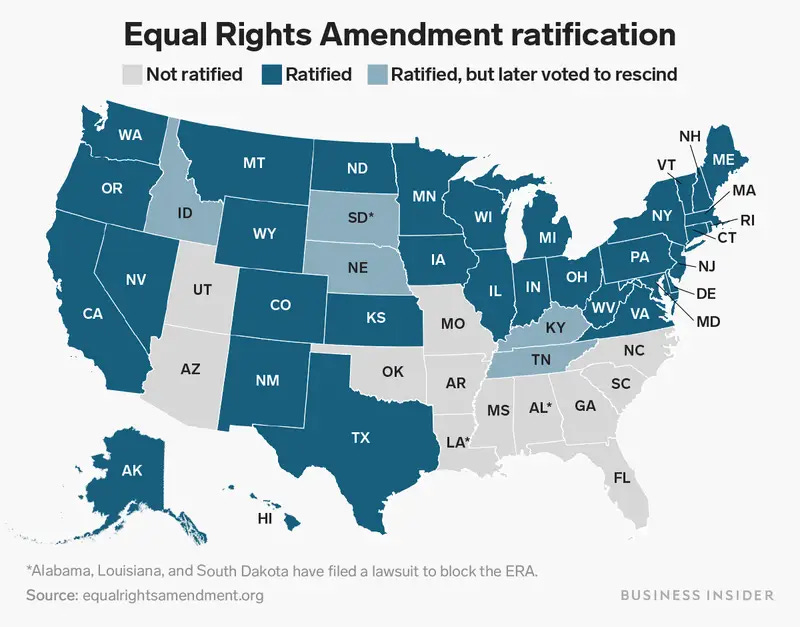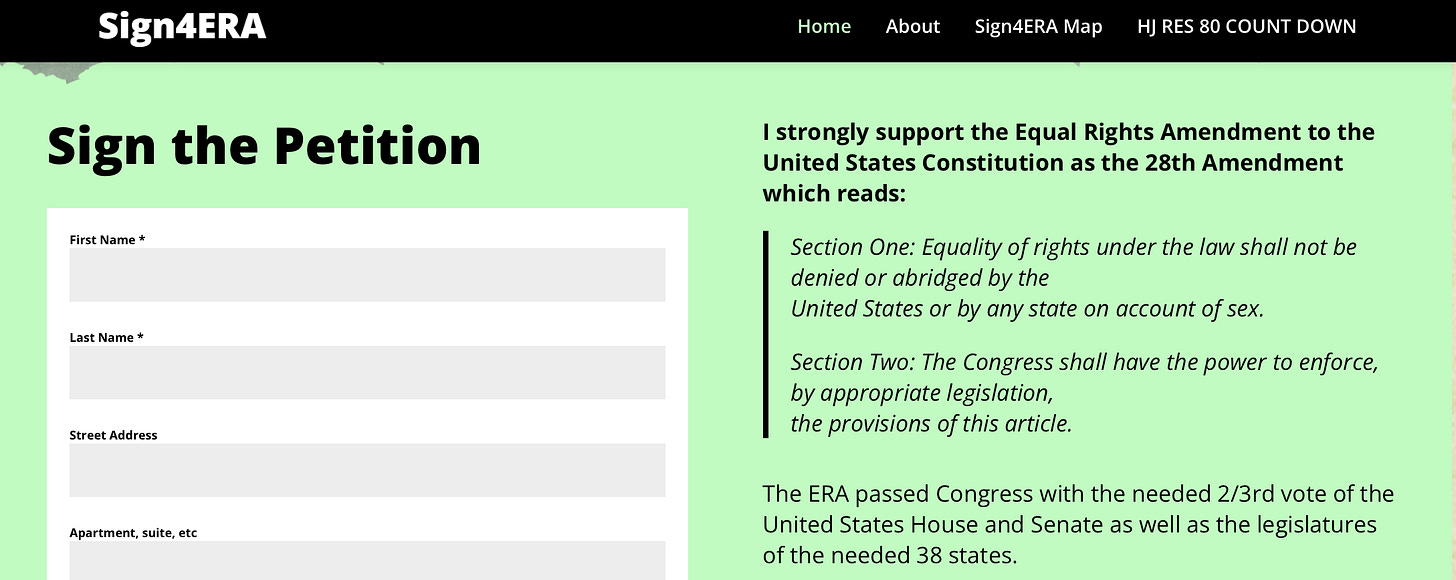Help the ERA Rise Again
Sign4ERA is gathering signatures, looking ahead to the 28th amendment
By Bruce Watson
NEW ORLEANS, JULY 3, 1982 — With brass bands blaring, a funeral procession marches through the French Quarter. Some 500 people, many dressed as suffragists, continue on to Jackson Square where the funeral ends in mourning for the Equal Rights Amendment, died of political causes at age 59.
But the ERA is not dead and you can help revive it. Sign here.
If you’re of a certain age — somewhere between 50 and 100 — you probably remember the Equal Rights Amendment. Introduced in Congress in 1923, the ERA lay dormant until the 1970s when second wave feminists rallied behind it.
As required by the Constitution’s straight-jacketing amendment process, both houses of Congress approved the ERA, the House in 1971, the Senate the following year. Then the proposed amendment, proclaiming “equality of rights under the law shall not be denied or abridged by the United States or by any State on account of sex,” started an arduous journey across America. To become an amendment, the ERA needed approval from three-fourths of all state legislatures.
And if you’re of a certain age, you remember what happened next. After getting within three states of approval, the ERA met a right-wing backlash. Tapping Reagan’s rightward shift, GOP-led fear mongers argued that the ERA would lead to drafting women into the military, divorced mothers’ loss of child custody, same sex marriage, and other surprises. The ERA didn’t just stall. It went backwards.
Four states rescinded their approval. States still up for grabs refused to sign on. And in 1982, after missing an extended ratification deadline, the ERA was declared “dead.” But reports of the amendment’s death proved premature.
Undaunted advocates kept up the fight, pursuing a “three-state strategy.” Congress, they argued, could overrule the previous deadlines and re-open the process. Starting in 2017, first Nevada, then Illinois, and finally Virginia put the ERA over the top, Virginia sealing the deal in January 2020.
Thirty-eight states plus both houses of Congress have ratified the ERA. So why isn’t it our 28th amendment? It’s complicated, worse than complicated, actually. It’s political.
Enter Sign4ERA.org. Founded in 2023 by former New York Congresswoman Carolyn Maloney, the nationwide grassroots group is circulating petitions, joining “No Kings” rallies, and preparing for a Democratic Congress to be elected next November.
“To help move the ERA into the Constitution,” Maloney wrote in a recent outreach, “we are continuing to ask people to sign the national petition, Sign4ERA. We are collecting signatures with emails and zip codes so that when both the United States House and Senate have pro-ERA leaders (hopefully in 15 months), Congressional supporters will quickly move forward.”
As of last week, the group’s petition has more than 157,000 signatures. No fixed number has been set as a goal. The more the better. Sign4ERA has just started a Clipboard Campaign, urging supporters to print the petition, slap it in a clipboard, and solicit signatures at rallies, protests, birthday parties, etc. A 2020 Pew Research polled show 78% of Americans want the ERA in the Constitution.
There are, of course, formidable obstacles. Since Virginia tipped the scales in 2020, the ERA has been mired in legal disputes. Arguments center on whether Congress’ original approval deadline can be extended and whether states can legally rescind their approval. The usual suspects are also arguing about President Joe Biden’s declaration, three days before stepping down, that “the 28th Amendment is the law of the land.”
Biden directed the National Archives to enter the amendment into the Constitution. But before any action was taken, the new regime took over and. . .
While the states grapple, Congress is ignoring a March 24 resolution to finally certify the ERA. All 214 Democrats have approved the resolution, just four short of a majority. But not a single Republican has signed on, or is likely to. ERA supporters, from statewide chapters of the National Organization for Women to campus groups, have used phone banking urging constituents to call their representatives. Given the current Congress, however, Sign4ERA is putting its full power into its “Clipboard Campaign Alert.”
Now 102-year-old, the ERA has life in it yet. But the struggle that began with suffragist Alice Paul will only continue with the lifeblood of today’s grassroots. Carolyn Maloney is not giving up. She signed her latest outreach, “with love, admiration, and a healthy dose of righteous fury, Your Clipboard Commander. . .”









So sorry. Here is the link for the Sign4ERA petition. https://www.sign4era.org
Donald Trump’s repeated verbal abuse of female reporters is a clear reflection of his broader contempt for women's professional authority and equality. This behavior isn't isolated; it’s a window into what the ERA seeks to dismantle. We can rally around the simple truth: respect for women's rights starts with respect in person, and in law.